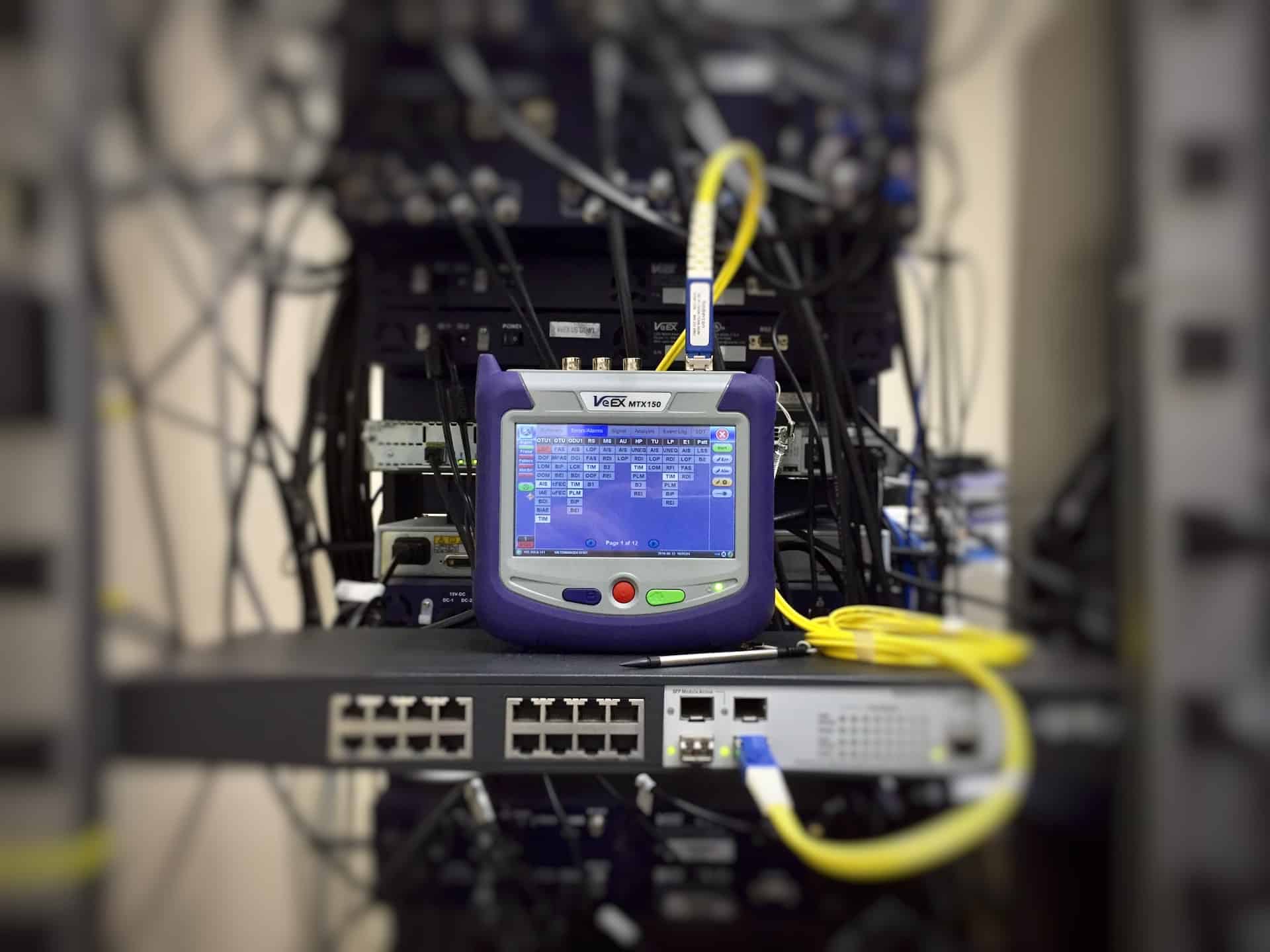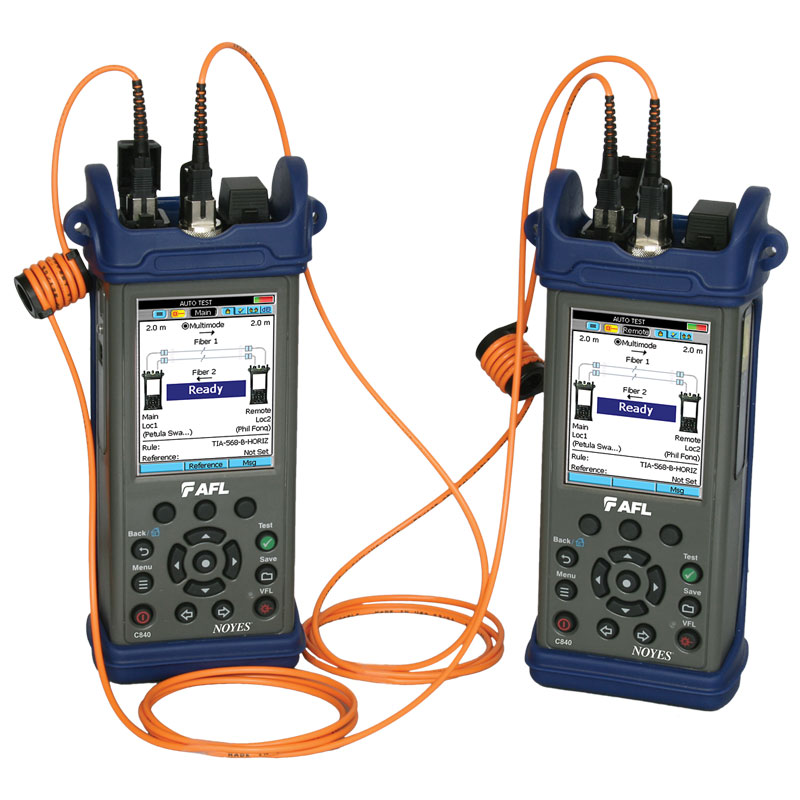Revealing the Secret Uses of Optical Fibre Testing for Reliable Data Transmission
In the realm of modern interaction, optical fiber testing emerges as a necessary method for enhancing information transmission. Recognizing the diverse applications of optical fibre screening invites a much deeper expedition into its crucial role in shaping the future of data interaction.

Importance of Optical Fiber Screening
The significance of optical fiber screening can not be overemphasized, as it functions as a vital component in making sure the integrity and efficiency of data transmission systems. In an age where high-speed interaction is extremely important, any kind of shortages in fibre optics can result in substantial data loss and lowered performance. Strenuous testing protocols are important to verify the integrity and performance of optical cable televisions.
Examining enables the identification of issues such as micro-bends, macrobends, and splice losses that might prevent signal top quality. Furthermore, it supplies understandings into the general depletion and transmission capacity abilities of the fiber, ensuring that the network satisfies particular operational criteria. Normal screening not just improves system performance yet also lengthens the life expectancy of the facilities by identifying potential problems prior to they intensify into expensive failures.

Sorts Of Optical Fiber Tests
Numerous kinds of optical fibre examinations are performed to guarantee the efficiency and reliability of fibre optic networks. These examinations can be categorized into several vital types, each offering a certain function in analyzing the honesty of the fiber.
First, Optical Time Domain Name Reflectometry (OTDR) is a famous test that identifies mistakes, mates, and ports within the fibre. By sending pulses of light and examining the reflected signals, service technicians can determine issues along the fibre's size.
2nd, insertion loss tests examine the amount of signal loss when light travel through adapters or splices, which is critical for maintaining network performance.
Third, return loss tests gauge the quantity of light reflected back towards the resource, providing insights into the high quality of links and prospective resources of interference.
Additionally, connection examinations ensure that the fiber path is complete, enabling specialists to verify that the fibre is undamaged with no breaks. robotic vision.
Lastly, aesthetic mistake locators use visible light to determine breaks or serious bends in the fibre, aiding in fast troubleshooting. Collectively, these examinations develop a comprehensive approach to maintaining ideal performance in fibre optic networks.

Applications in Network Maintenance
In modern-day telecoms, efficient network maintenance depends heavily on optical fibre screening to determine and rectify problems immediately. Routine testing makes certain that the network operates at optimum performance degrees, lowering downtime and improving individual experience.
One of the primary applications of optical special info fibre testing in upkeep is the detection of mistakes, such as breaks, bends, or inappropriate connections. Techniques like Optical Time Domain Name Reflectometry (OTDR) enable specialists to situate these issues properly and examine the quality of the fibre link. In addition, loss screening verifies the integrity of the optical path, making sure that signal attenuation continues to be within acceptable limits.
Regular maintenance testing likewise aids in safety nets, recognizing possible troubles prior to they rise right into considerable failings. This proactive technique can save companies both time and funds. During upgrades or growths, optical fiber testing makes sure that new setups incorporate effortlessly with existing facilities.
Enhancing Information Transmission Dependability
Effective network maintenance via optical fiber screening not just addresses immediate issues but likewise plays a significant role in improving data transmission dependability. By determining mistakes, gauging signal loss, and analyzing the general problem of fibre optic wires, screening ensures that possible issues are remedied prior to they rise right into considerable interruptions.
Routine optical fibre screening, such as time-domain reflectometry (TDR) and optical time-domain reflectometry (OTDR), allows service technicians to determine the exact areas of breaks, bends, or port concerns within the network. This aggressive strategy not just decreases downtime however additionally optimizes the performance of information transmission by guaranteeing that the paths for signals are clear and functioning efficiently.
In addition, screening aids go in verifying adherence to market standards and specifications, which is essential for keeping the stability of information flow. By guaranteeing that each connection fulfills called for limits for loss and quality, companies can reinforce their confidence in the reliability of their data networks.
Eventually, purchasing extensive optical fiber screening not just enhances information transmission integrity but additionally sustains the lasting operational effectiveness of communication infrastructures.
Future Fads in Fibre Screening
Emerging innovations are poised to reinvent fibre testing, leading the way for improved performance and precision in data transmission diagnostics (optical fibre diameter analyser). As the need for faster internet and higher bandwidth remains to climb, the integration of advanced tools such as expert system (AI) and maker learning (ML) is established to change conventional fiber testing approaches. These technologies will certainly enable anticipating maintenance and automated fault discovery, dramatically minimizing downtime and enhancing network integrity
Additionally, the fostering of Net of Points (IoT) gadgets will certainly help with real-time tracking of fibre networks, permitting immediate identification of efficiency concerns. This change in the direction of positive administration will lessen disruptions and enhance data circulation.
Furthermore, developments in navigate to this website optical time-domain reflectometry (OTDR) and brand-new screening requirements will certainly improve the precision of measurements, guaranteeing that data honesty is preserved throughout the transmission procedure. The development of 5G technology likewise requires the growth of extra advanced fibre testing strategies to sustain its high-speed requirements.
Final Thought
To conclude, optical fiber screening is essential for preserving reliable data transmission within communication networks. By utilizing different screening techniques, such as OTDR and insertion loss examinations, prospective mistakes can be identified and corrected, thereby boosting signal clarity and minimizing downtime. Normal screening not just makes sure conformity with sector criteria but likewise facilitates aggressive upkeep, eventually adding to the long-term reliability and efficiency of fiber optic systems. The continued evolution of testing approaches will additionally reinforce these capabilities in the future.